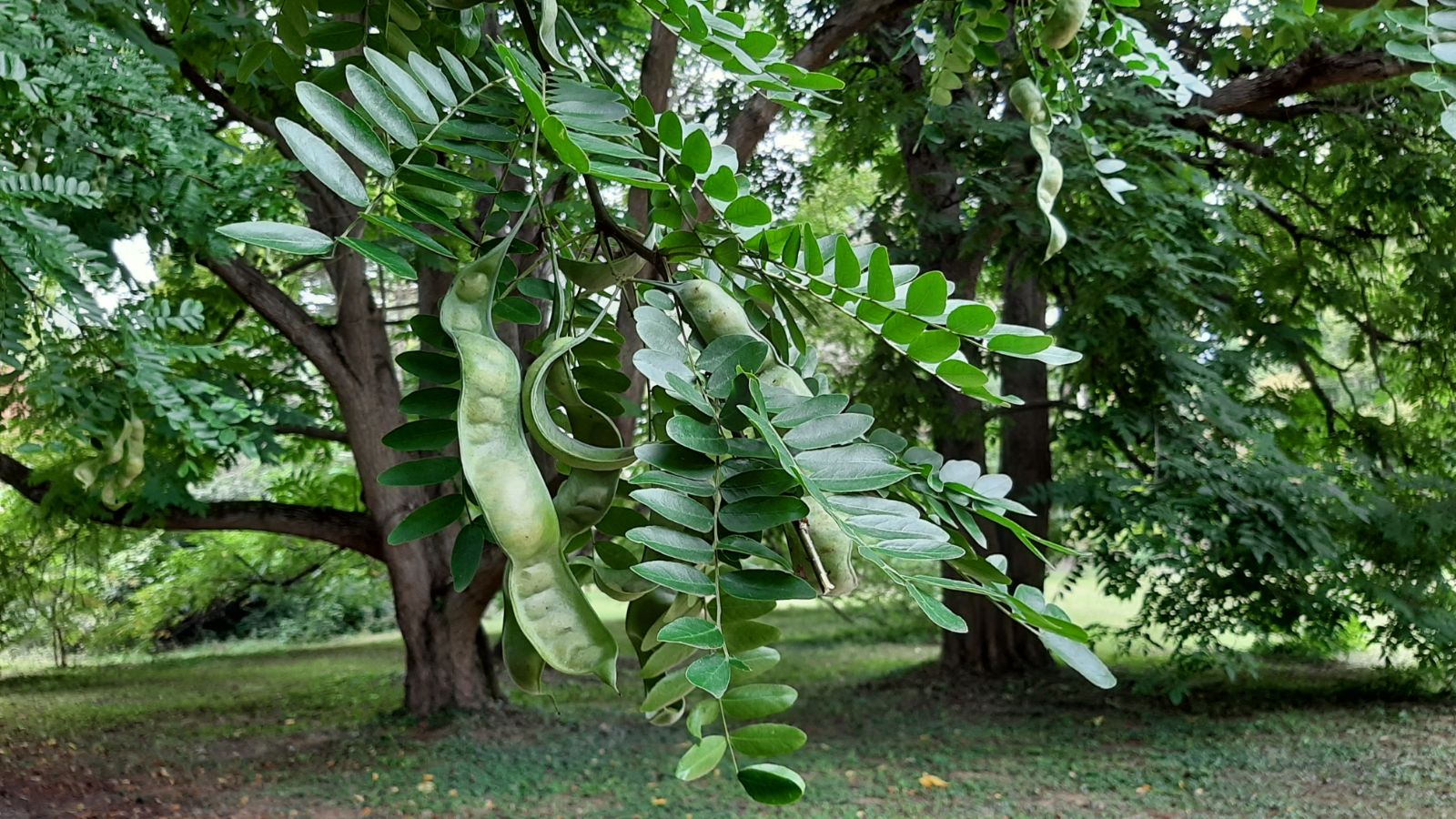Gleditsia japonica
Credits
Article from Bean's Trees and Shrubs Hardy in the British Isles
Recommended citation
'Gleditsia japonica' from the website Trees and Shrubs Online (treesandshrubsonline.
Genus
Synonyms
- G. horrida (Thunb.) Mak., not Salisb.
- Fagara horrida Thunb.
Infraspecifics
A tree 60 to 70 ft high, the trunk and branches very formidably armed with branched, slightly flattened spines; young shoots on plants at Kew dark purplish brown, smooth and shining. Leaves simply or doubly pinnate, 8 to 12 in. long, each leaf or leaf-section carrying fourteen to twenty-four leaflets. Leaflets ovate to lanceolate, often unequal at each side of the midrib, blunt to pointed at the apex, margins entire; main-stalk, midrib, and stalk of leaflets downy. In Japanese fruit-bearing specimens the leaflets are 3⁄4 to 11⁄2 in. long, 1⁄4 to 1⁄2 in. wide, but in small cultivated trees they are only 1⁄3 to 5⁄8 in. long. Pods 8 to 10 in. long, 1 to 11⁄4 in. wide, scimitar-shaped, ultimately twisted.
Native of Japan; introduced to Kew in 1894, where young trees raised from seed supplied by Boehmer are quite hardy, although slow-growing. When the plants are young, the small leaflets give them a very different aspect to mature specimens, but they are unsurpassed among hardy trees in their fern-like elegance. The species appears to be allied to G. caspica, under which by one authority it has been placed. The pulp in the pods, as in G. sinensis, is saponaceous, and is used by the Japanese for washing cloth.
There are five examples of this species at Kew; two, from the 1894 introduction, are rather flat-topped, not very shapely trees, about 30 ft high.
From the Supplement (Vol. V)
The tree at Kew in the Gleditsia Collection, pl. 1873, is 40 × 31⁄4 ft and another near the Palm House 40 × 31⁄4 ft (1976).

